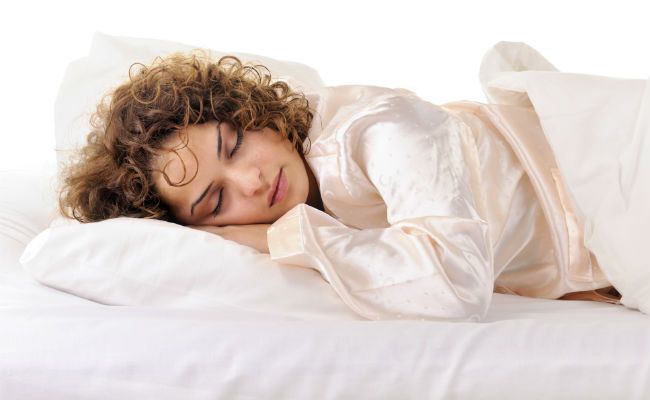
Do you remember your mom saying “You’ll catch a cold!” if you have wet hair? While for the most part, catching a cold is just a myth, there are other health risks that can cause unhealthy situations for those who opt to go to sleep with wet hair. According to hair Svenson hair expert Teresa Cruz, going to bed with wet hair can introduce real health issues to some.
It’s just like wearing a wet piece of clothing. It is more prone to bacterial or fungal infection,” says Cruz.
“It’s just like wearing a wet piece of clothing. It is more prone to bacterial or fungal infection,” says Cruz. “It will cause an unnecessary increase of blood flow in the scalp as your body’s way of protecting itself from bacteria. A reaction occurs on the scalp which can lead to a headache.” And while it may not be true for you, there are people more prone to developing infections who may want to reconsider their wet hair habits. While the experts are still unsure of the exact number of people this affects, it is always a safe bet to take the necessary precautions to avoid getting an infection if this is something you are prone to.
According to Natural Healing Magazine, it is also easier for your hair to break when it’s wet. Hair that is rubbed against a pillow at night could suffer more breakage and damage from the friction since “during the night we always crush and sleep on our hair.”
If you happen to live in a place with typically warmer climates, the experts at New Health Advisor say you may not suffer from any of these issues, but if you sleep in a cold room or simply live in a colder temperature, this may still be a concern for you.
If you MUST go to bed with wet hair…
For some curlies, going to bed with wet hair is the only way to achieve the definition you are looking for. Some just find that this works the best for their lifestyle. If you must go to bed with wet hair, here are three options to minimize the damage to your hair.
Diffuse
Instead of going to bed with soaking wet hair, towel dry gently with a damp towel and add your usual styling product. Use a diffuser to dry another 10-20% of your hair afterwards.
Twist
For pretty curls and waves the next morning, apply a light mousse or gel-cream to your damp locks and move the product from roots to tips, split your hair into sections and twist sections gently. Secure the ends of the twists with elastics and allow your hair to dry overnight on a satin or silk pillowcase. Be sure to remove the elastics in the morning and gently shake your hair to release your natural pattern. You can finish with a bit of hair spray or pomade.
Scarf
Another version of this “damp-do” is wrapping your hair with a silk or satin scarf at night instead of twisting and adding elastics. Be sure to tie or secure the scarf loosely so your hair and scalp can breathe. Again, damp hair is better than dripping wet hair when heading off for a good night’s rest. Be careful, however, and do not use a towel. Your body temperature changes as you sleep, and having a sopping wet scalp can be the cause of headaches for some people. Using a thin, silk scarf that lets your curls breathe is important for scalp and hair health at night.
Our fave YouTubers show us how they prep their hair at night for the healthiest hair possible:
[prodmod]


